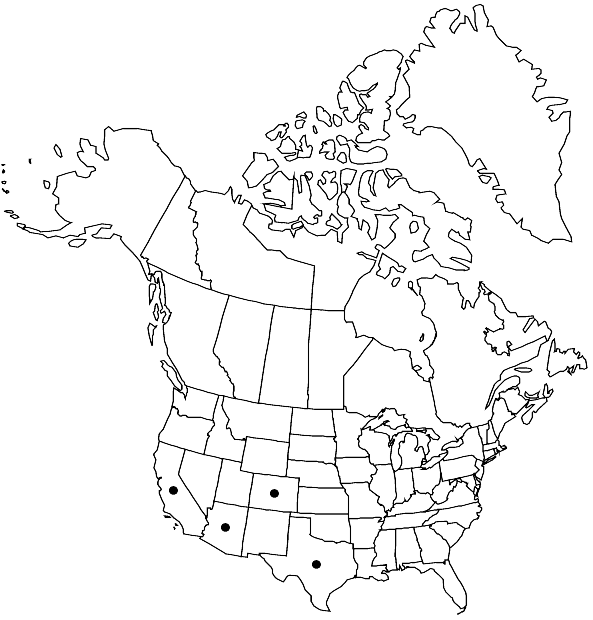Entosthodon tucsonii
Moss Fl. N. Amer. 2: 81. 1935,.
Plants 2–5 mm, pale yellow-green. Leaves variously contorted when dry, oblong-lanceolate to narrowly obovate, imbricate, somewhat concave, mostly 2.5–4 mm; margins serrulate to serrate by projecting ends of thin-walled cells; apices gradually narrowed to an acumen bearing a filiform tip of 3–4 cells; costa ending 4–7 cells before the awn; basal laminal cells rectangular (85–110 × 32–40 µm), distal cells irregularly rectangular to oblong-rectangular, or polygonal, somewhat rhomboid near the margins. Seta brownish, 6–10 mm, straight, not hygroscopic. Capsule ovoid-pyriform from a long neck approximating half the total length, 2–3 mm, sulcate especially in the neck when dry and empty; exothecial cells scarcely thickened, oblong (2–3:1) and transversely elongate in 5–7 rows proximal to the mouth; operculum rounded-conic; peristome rudimentary or absent, exostome teeth brownish, irregularly blunt tipped, striate-papillose, endostome segments shortly rounded triangular, extending to about the tooth middle, smooth. Calyptra cucullate, long-beaked, inflated around the capsule, large, smooth. Spores 32–40 µm, papillose.
Habitat: Sandy soils, along intermittent desert streams
Elevation: moderate to high elevations
Distribution

Ariz., Calif., Colo., Tex.
Discussion
Selected References
None.
